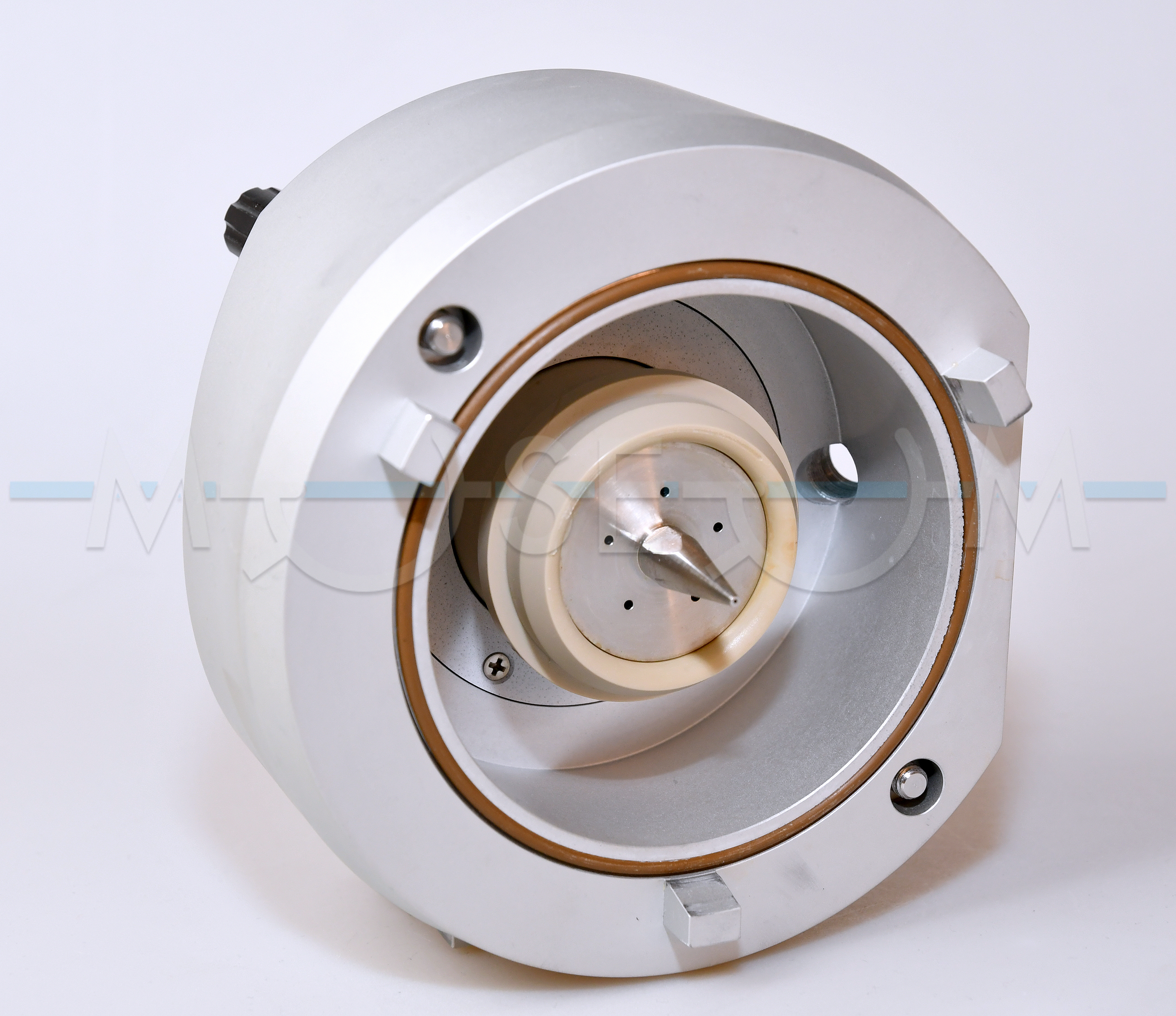Categories of exhibits
Electrospray probe assembly
Exhibit no. 954
Electrospray ionization (ESI) is the most common ionization technique, which is often used to detect compounds separated by high-performance liquid chromatography. In electrospray, high voltage is applied to a liquid sample supplied through an emitter. At the emitter tip, the liquid forms a Taylor cone, which emits small and highly charged liquid droplets. The solvent evaporates from the droplets and gas-phase ions are formed.
The exhibit is an ESI probe assembly from the triple quadrupole mass spectrometer TSQ 7000 manufactured by ThermoQuest in 2001. It consists of a flange, which holds the ESI probe and seals the atmospheric pressure region of the ion source. When the flange was in the operating position, it compressed the high-voltage safety-interlock switch and two retainer bolts secured it in place. A grounded fitting holder secures a fitting that connected the sample capillary to the ESI sample tube. The ESI probe includes the sample tube, needle, nozzle, and manifold. The liquid sample entered the ESI probe through the 0.1 mm ID fused-silica capillary sample tube. It extends into the ESI needle, on which spray voltage was applied (typically ±4.5 to ±5 kV). The gas and sheath liquid plumbing delivered nitrogen gas and sheath liquid, respectively, to the nozzle. The ESI probe accommodated liquid flows between 1 μL/min and 1 mL/min.





